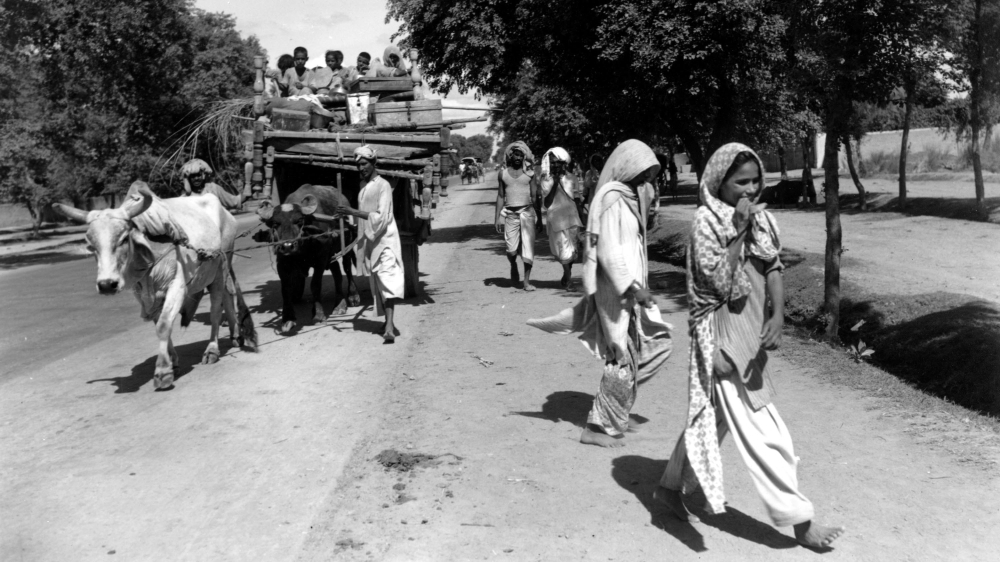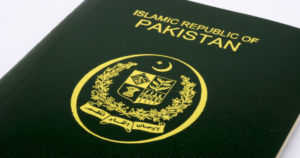
Partition Education Group, founded last year in UK, seeks to include 1947 partition of Indian subcontinent in national curriculum.
London, United Kingdom – Fozia Raja, a second-generation Pakistani Briton, remembers studying about the British rule in India at school.
“What they didn’t focus on is Britain leaving India,” the London-based human resources professional told Al Jazeera.
“And we know why they skim over that – because it is a tragic and inhumane account that had consequences on the lives of millions of people.”
After nearly 200 years of its rule, the British colonial power withdrew from the subcontinent in 1947. The hurried transfer of power and the partition of British India along religious lines – a Hindu-majority India and Muslim-majority Pakistan – sparked mass-scale religious riots that left more than two million people dead and nearly 15 million displaced.
Outside of the violence and the famine it caused, the partition is also said to have caused the largest mass migration in history. To this day, the socio-political and economic repercussions of partition reverberate through the South Asian region.
Whatever Raja learnt of this momentous event was through the first-hand accounts of her grandmother, a victim of abduction during the riots and forced conversion.
“I didn’t learn about the partition through the national curriculum. I learnt it at home, just like so many other South Asians,” she said.
Like Raja, Fariha Munim, a second-generation Bangladeshi Briton learned about the partition at home.
“There was no mention of it in secondary or high school. I didn’t even know that this event had happened,” said the Bedfordshire resident who herself teaches history.
It was only in Munim’s third year of university that a conversation at home led her to do her research on partition.
“My father asked me: ‘Did you know that Bangladesh was once a part of Pakistan?’” she said.
“Studying partition helped me understand why later, Pakistan and Bangladesh became two different countries,” she added. “I began to make sense of the impact of colonialism.”
The British national curriculum, which is applicable only to state-funded schools, serves as a guiding map, but teachers and schools have the autonomy to include or exclude content indicated as “non-statutory”.
In July last year, more than 260,000 people signed a petition to make the national curriculum more inclusive of BAME (Black, Asian, and minority ethnic) history, calling for topics on Britain’s role in colonialism, the trans-Atlantic slave trade, institutional racism and mistreatment of BAME societies to be made compulsory for all United Kingdom students.
However, the petition was rejected by the Department of Education on the grounds that the national curriculum already had the flexibility to be inclusive of BAME history, and therefore, it was not necessary to change the curriculum.
While autonomy in the curriculum is favourable, some argue that such a move also runs the risk of BAME history not being taught at all.
Munim says the history curriculum tends to be Eurocentric and does not provide context on vital global histories that made Britain the country that it is today.
But things are changing.
As teachers of colour recognise the inaccuracy of the narrative and bring their personal experiences, it is affecting decisions of what and how to teach children.
A significant part of Munim’s work this year was looking at how partition history can be embedded into the history curriculum at her school. Citing the example of Holocaust education, she believes that looking at human stories or humanising events can help us to learn more effectively.
Founded in 2020, the Partition Education Group (PEG) is the official campaign to include the partition of the subcontinent in the national curriculum.
PEG also aims to raise the profile of South Asian history and heritage in the UK through education, arts, culture and commemorations.
The group is also a part of a South Asian History Month campaign, which started on July 18 and will run up to August 17.
Raj Unsworth, PEG chair and former trustee in the UK education sector, says since the curriculum allows autonomy, the group is working with students, academics, subject specialists, museums, archives and art organisations to prepare teaching materials and resources in time for the partition’s 75th anniversary, to be observed next year.
As per the 2001 census in the UK, South Asians are the largest minority group, accounting for 50 percent of all ethnic minorities in England and Wales.
Unsworth believes that teaching a shared history is important for social integration and a cohesive society.
“Racial discrimination stems from ignorance and lack of understanding,” she told Al Jazeera.
“I came to the UK when I was seven. I was embarrassed of my dual identity (British Indian) and didn’t know enough about colonial history. I learnt about the East India Company through the lens of a white Brit.”
Unsworth says South Asian parents like hers were “busy trying to integrate and survive” in the UK.
“But now, second and third generations are beginning to see that our histories are important and crucial to social integration,” she told Al Jazeera.
“Teaching children about how Britain became so diverse is important and this education should be fronted by the South Asians.”
For Natasha Junejo, literary lead of South Asian Heritage Month (SAHM) and co-host of a podcast on colonialism, the Department of Education’s decision was “immensely frustrating”.
“The wealth of this country is rooted in colonialism,” she said.
“It is difficult to come to terms with a history of subjugating people, raping and pillaging of lands and the slave trade – it doesn’t align with the historical memory of being ‘the saviour’.
“And because we don’t talk about the fractious, difficult and uncomfortable side of colonial history, they do not understand why there are so many people of colour here, who arrived as citizens (under special citizenship acts),” she added.
Like Unsworth, Junejo also believes that looking at the unifying, humanising parts of history can only lead to compassion and a better understanding of how people relate to each other.
Activists say apart from being ostracised or “othered”, this incomplete or inaccurate narrative also marginalises South Asian Britons.
“The previous generations were displaced – sometimes twice, like the Ugandan expulsion of South Asians – and had to rebuild home. They locked their trauma into silence,” said Junejo.
“This generation is reflecting on what it means to belong. But this sense of belonging has been revoked, habitually and repetitively. Now, we are questioning the reality of ‘I thought I belonged here.’”
Junejo added that organisations such as PEG, SAHM and individuals are taking it upon themselves to “piece together” anecdotal and historical evidence of what happened and are galvanising towards enshrining this part of British history.
Junejo is currently working with linguists and historians to curate an audio-visual immersive exhibition themed on partition memory.
While there has been mainstream attention on the partition in recent years, particularly, during the 70th anniversary in 2017, she says this time it feels different.
Since the murder of George Floyd and the Black Lives Matter movement in the United States, the toppling of Edward Colston’s statue in Bristol and the debate around the removal of Cecil Rhodes’ statue from Oxford University, Junejo says things are improving in Britain.
“People are having difficult conversations on disparities in the system, in spaces and how we actively make lasting change. And this doesn’t feel like a flash in the pan,” she said.
“I am incredibly encouraged in that respect.”






